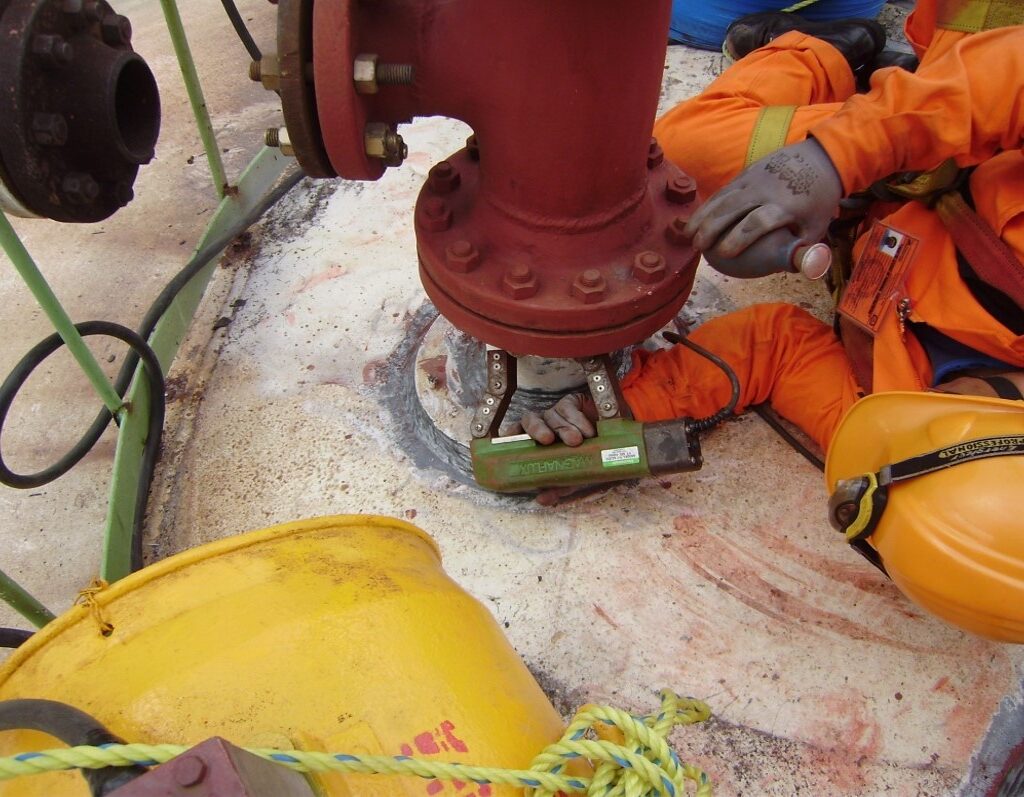
Menú
Magnetic Particles
Magnetic particle inspection is a type of non-destructive test that detects surface and subsurface discontinuities in ferromagnetic and / or electrically conductive materials, which may lead to future failures of these. This technique allows the detection of superficial and subsurface cracks in welded joints, plate or in parts of complex geometry.
Advantages
Disadvantages
- It is possible to inspect the parts in series, obtaining safe and immediate results during the process.
- Inspection is faster than liquid penetrants and cheaper.
- Relatively simple equipment, provided with controls to adjust the current, and a visible ammeter, connectors for HWDC, FWDC and AC.
- Portability and adaptability to small or large samples.
- Requires less cleaning than Penetrating Liquids.
- Detects both surface and subsurface discontinuities.
- The indications are produced directly on the surface of the piece, indicating the length, location, size and shape of the discontinuities.
- The equipment does not require extensive maintenance.
- It is applicable only to ferromagnetic materials; In welding, the deposited metal must also be ferromagnetic.
- Requires a power source (there are DC equipment).
- Uses 100 mesh (0.0059 in) sieve iron particles.
- It will not detect discontinuities that are at depths greater than 1/4 ″.
- Detection of a discontinuity will depend on many variables, such as the permeability of the material, type, location and orientation of the discontinuity, amount and type of magnetizing current used, type of particles, etc.
- The application of the method in the field is more expensive (DC equipment is more expensive).
- Surface roughness can distort flow lines.
- Two or more sequential inspections are required with different magnetizations.
- Generally, after inspection a demagnetization is required.

There are mainly two types of magnetic particles: Visible magnetic particles and fluorescent magnetic particles, the former are visible to the naked eye and do not require any type of artificial lighting, fluorescent magnetic particles use UV lighting to be visible, which is why they are normally used in closed places or with little lighting besides being more sensitive.
Grupo PIESADEC has personnel certified as Level II by ISO-9712 and/or SNT-TC-1A in Magnetic Particles in addition to having Magnetic Yokes with calibration certificate.